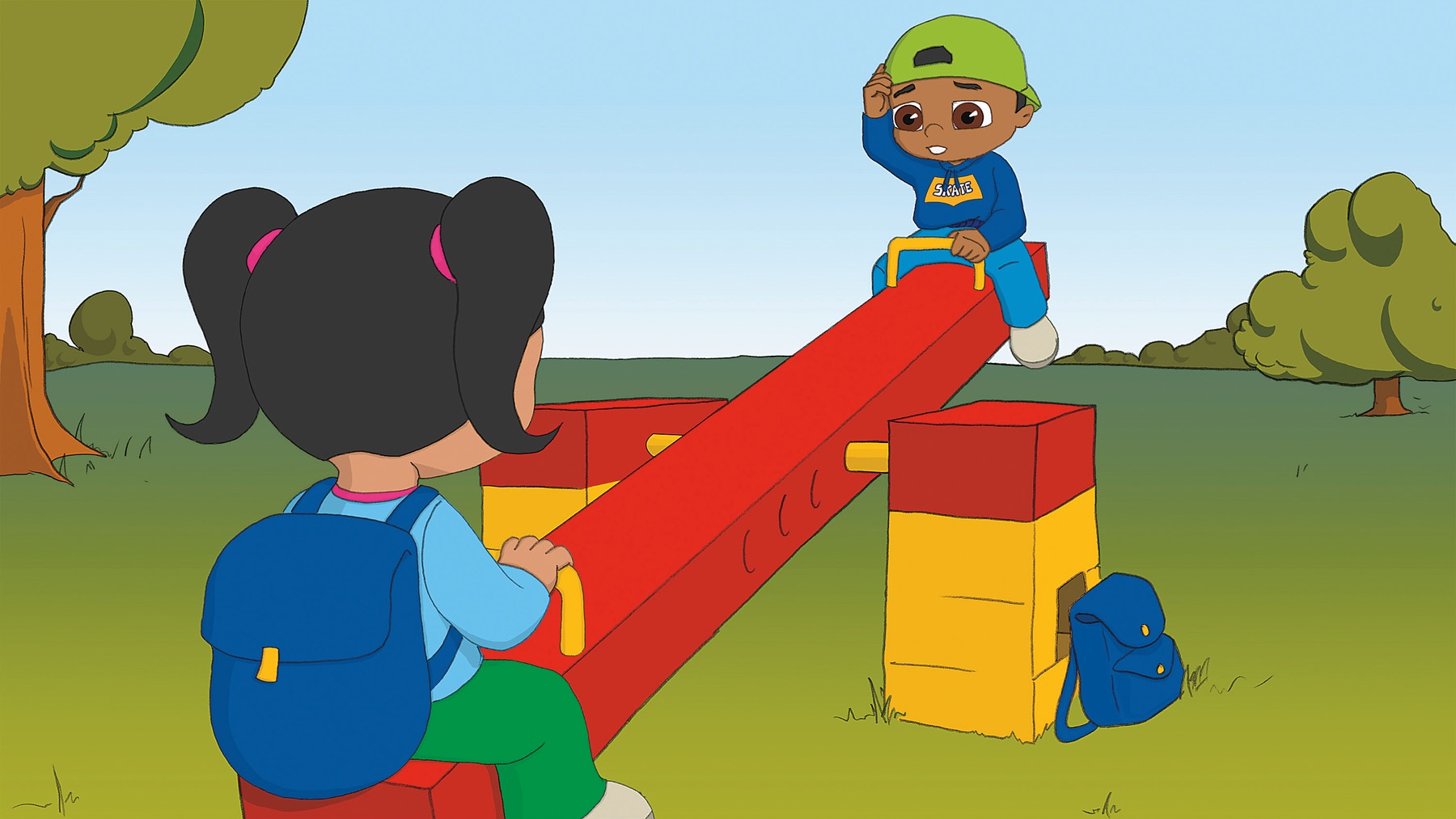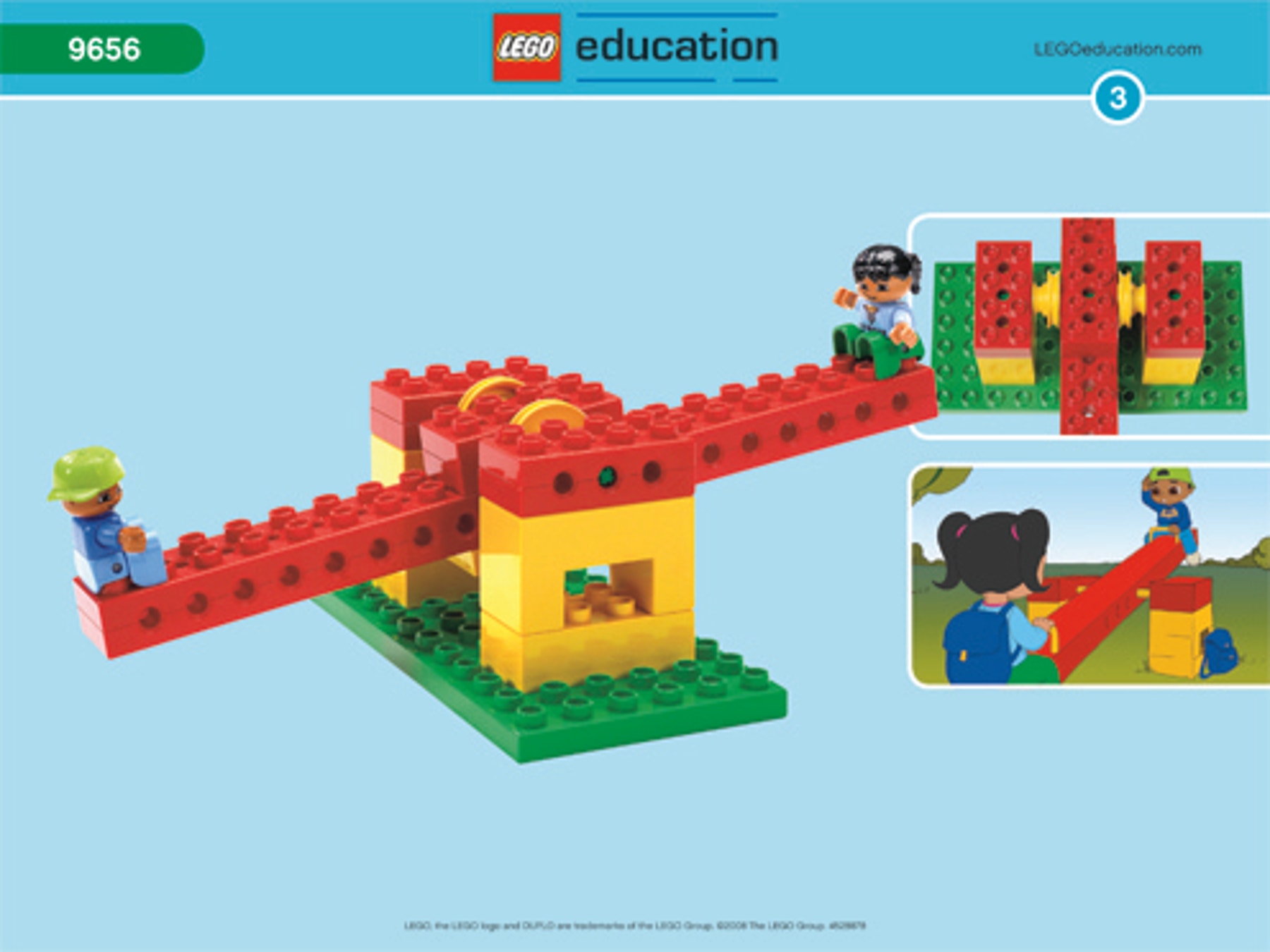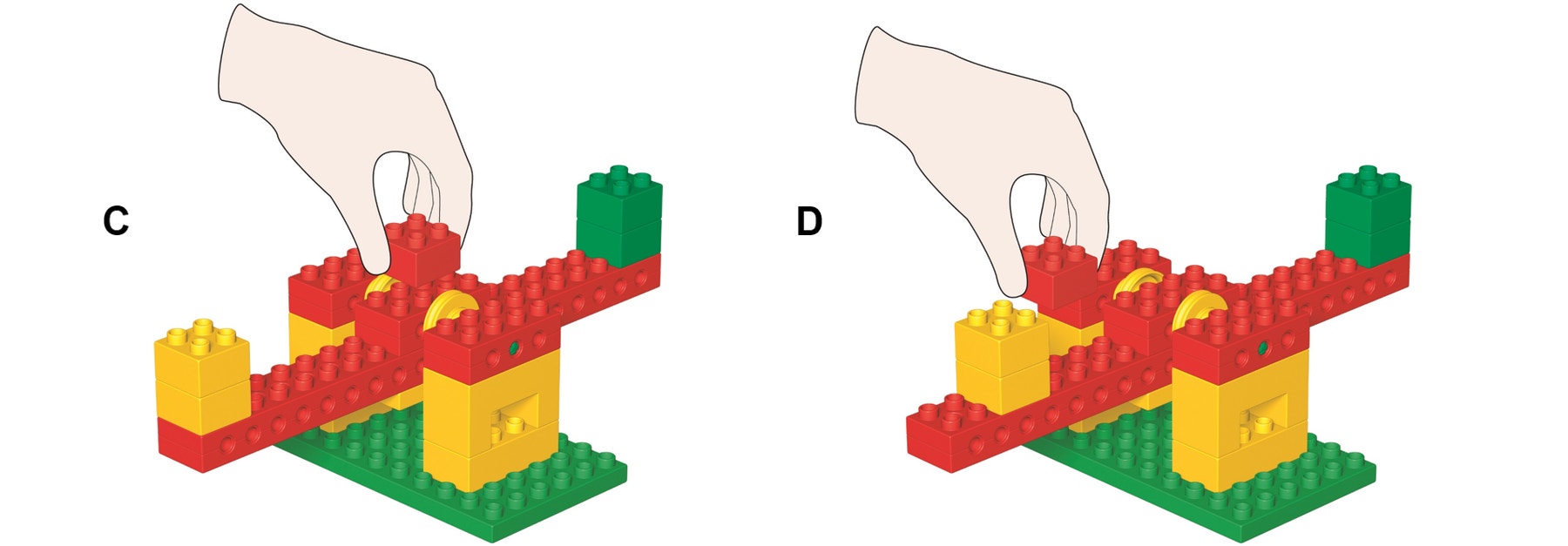Seesaw
Exploring balances and forces, pivots, levers and weight.

Connect
(5-10 Minutes)
On their way home from school Sam and Sara stopped at the playground. Sam and Sara jumped onto the seesaw only to find out that something was different that day. There wasn’t any going up and down. Sara was down and Sam was up. No matter how hard Sara pushed away from the ground she couldn’t get herself up and Sam down, and they both wondered what was so different today from any other day.
Can you help Sam and Sara build a seesaw that will balance?
Let’s find out!

Construct
(5-10 Minutes)
Build the seesaw using building instructions no. 3.

- Be sure that it balances and moves up and down smoothly
- If it does not balance, check that the pivot position is correct
- If it does not move smoothly, check that the yellow pulley wheels are not rubbing against the fixed red bricks
Contemplate
(10-15 Minutes)
Balance or unbalanced?
When you add weight (2x2 bricks) to the seesaw it will either balance or tip to one of the two sides. Find out which seesaw will balance and which will be unbalanced.
First predict which seesaw will balance and which will be unbalanced.
Write down your predictions using the words on the worksheet.
Next, test the different brick positions.
Write down your findings using the words on the worksheet.
Balancing the seesaw depends on the size of the weight (mass) at each end and the distance of the weight from the pivot point.

Have the students reflect on their tests by asking questions such as:
What did you predict would happen and why?
Describe what happened.
Was this a fair test?
Describe how the model works.
Continue
(10-15 Minutes)
One brick balance?
First try to predict where to place the brick to make the seesaw balance.
Next, test to see if what happens is what you have predicted.
*On the worksheet, draw where to put the brick that will make the seesaw balance. *

Teacher Support
Students will learn about:
How movement can be described in many ways
How levers, pivot point, weight and loads affect balancing
How cause and effect can be explored in mechanical systems
NGSS
Disciplinary Core Ideas: Physical Science
1 MS-PS2 Motion and Stability: Forces and Interactions
Crosscutting Concepts
Cause and effect: Mechanism and explanation
Scale, proportion, and quantity
Science and Engineering Practices
Asking questions and defining problems
Developing and using models
Planning and carrying out investigations
Obtaining, evaluating, and communicating information
Common Core State Standards for Mathematics
Mathematical Practice
MP1 Make sense of problems and persevere in solving them
MP2 Reason abstractly and quantitatively
MP5 Use appropriate tools strategically
MP6 Attend to precision
MP7 Look for and make use of structure
Measurement & Data
K.MD.A
Writing Standards
W.K.2 / W.1.2 / W.2.2
Speaking and Listening
SL.K.3 / SL.K.6 / SL.1.3 / SL.2.1 / SL.2.3 / SL.2.4
Student Material
Share with:
 Google Classroom
Google Classroom



